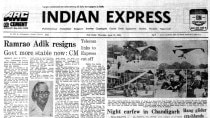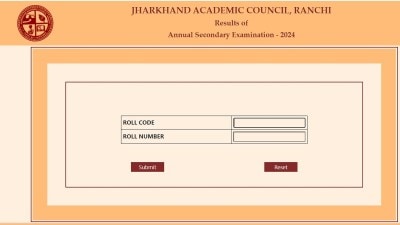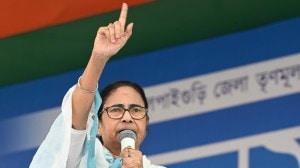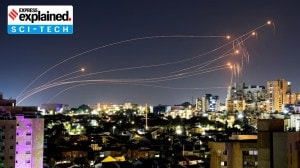- India
- International
Lakshadweep’s development bears imprint of Rajiv Gandhi’s visit in 1988
And Lakshadweep today has no poor. This was Rajiv’s enduring gift to the islanders.
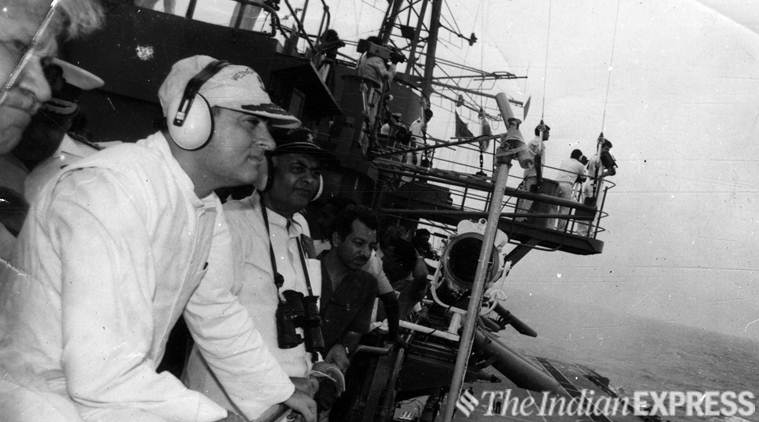 Rajiv Gandhi on board INS Viraat. (Express Archives)
Rajiv Gandhi on board INS Viraat. (Express Archives)
In a letter to me, dated August 4, 1987, as I left the PMO to take up an assignment in Lakshadweep, classified by the MHA as a “punishment posting”, Rajiv Gandhi wrote: “Thank you… for your hard work and cheerful assistance over the last five years, first with my mother and then with me. We shall miss you, especially in our forays into the countryside. You are going to an important assignment. I look forward to seeing you in Lakshadweep at the winter meeting of the Island Development Authority.”
Lakshadweep’s lagoons are spread over about 4,200 sq km, its territorial waters cover 20,000 sq km and these little specks on a map give to India a vast 4,00,000 sq km of the Indian Ocean as an exclusive economic zone.
His visits since 1985 convinced Rajiv that the island territories needed a distinct approach for their development. For this, the Island Development Authority (IDA) was set up within the Planning Commission as head of which the PM appointed M G K Menon, a leading Indian scientist and environmentalist of the time. The IDA’s inaugural meeting was held in Port Blair and a decision was taken that it would hold annual meetings every year thereafter, rotating between the two island territories and New Delhi. I hosted the scheduled 1988 meeting in Kavaratti. The Planning Commission hosted the 1989 meeting in the capital, but the next and last such meeting was only in January 2003, once again in Port Blair, which was addressed by then Prime Minister Atal Bihari Vajpayee.
It was to the meeting of the IDA that Rajiv travelled to Lakshadweep with his entire cabinet in 1988. In reporting on preparations for the meeting, The Indian Express, in a report by P Raman published on December 16, 1987, waxed eloquent: “Engineers and workers are building helipads and temporary ‘hutments’ with modern facilities which have to be brought from the mainland, some 200 km to 400 km away.. Almost everything — except coconut and fish — will have to be airlifted. This includes cooks, water and generators, in addition to the omnipresent securitymen and attendants.”
The official visited lasted two days but Rajiv was to stay on with family and friends for a holiday in Bangaram, an uninhabited island rich with coconut and coral, described in The Indian Express as ‘Barren Islet to Host Rajiv’s Holiday’. There, in a tropical resort with no television, no air conditioning but offering a range of sea water sports, Rajiv was to indulge his favourite hobby, photography, which was published in Rajiv’s World. The elaborate arrangements described by Raman were for Kavaratti, expenses for which were the Administrator’s. As the Express News Service Cochin’s report of December 29 announced, “To Top it all… The Lakshadweep administration has a pleasant surprise for the big contingent of Central ministers, official and their family members, not to mention the Prime Minister, visiting the island. Large quantities of Ambalappuzha palpayasam, one of the choicest puddings of Keralites, have been airlifted to Lakshadweep to treat the visiting dignitaries.”

The arrangements in Bangaram were modest, made by the NGO, Society for the Promotion of Recreational Tourism and Sports, set up by the government in the islands to manage cultural and sports activity. Rajiv had invited me to drop in whenever I wished, but conscious of official decorum I, together with my family, visited but once to ask after the welfare of the guests. So N Madhavan Kutty’s report of January 24 on Bangaram, ‘The Holiday That was’, based as it was on hearsay from overawed attendants, was sheer exaggeration.
The IDA had in its first meeting in Port Blair, asked the Planning Commission to make a special study of the environment of the union territories so as to help plan their development. A report on each of the two island systems was presented in the meeting in Kavaratti and became the framework of the coming five-year plans for the island territories.
By then, Lakshadweep had its own airport and a flourishing tourist industry with an international tourist resort in Bangaram. A thriving tourist industry fuelled by economic activity in the UT was intended as the base for an economic take-off, always ensuring that this would not compromise but enrich the fragile coral ecology. This became the backbone of a thriving water sports industry in India, led by entrepreneurs such as the Mumbai-based Prahlad Kakkar.
Rainwater harvesting was introduced on every island — today every home has that facility — as was solar power for lighting. Today, Lakshadweep has the highest percentage of the use of solar power of any state or union territory. All islands were connected by Pawan Hans helicopters and orders were placed on international tender for high-speed passenger boats. Besides, a study by the Institute of Oceanography had helped to redesign the tripods used to buttress eroded beaches and water supply especially designed to be supplied through drainage by gravitation.
But all these initiatives, including the establishment of among the country’s first Navodaya Vidyalaya in Minicoy, carried Rajiv Gandhi’s signature. Under his directions to the National Informatics Centre, the office of the Administrator, Lakshadweep, became among the first in India to be computerised. Every island in Lakshadweep had a computer in an early extension of the Government of India’s policy at the time of installing computers in every district. Endorsed with outlays by the Eighth, Ninth and Tenth Finance Commissions this established, in the words of the last of these Commissions “speedy and accurate generation of accounting information that might be needed for purposes of better planning, budgeting and monitoring”. And Lakshadweep today has no poor. This was Rajiv’s enduring gift to the islanders.
This article first appeared in the print edition on May 15, 2019, under the title ‘A visit, a vision’. The writer is a former chairperson of the National Commission for Minorities
EXPRESS OPINION
More Explained
Apr 19: Latest News
- 01
- 02
- 03
- 04
- 05











